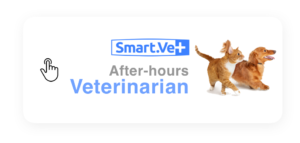Educational Articles
-
Feeding your cat can be easily accomplished with mealtimes on a set schedule. At least two meals per day are best for your cat. The use of food toys or interactive feeders adds interest to your cat’s mealtime. Routines help your cat adjust to changes that may occur in your home as well as allow you to monitor her health.
-
Feeding your dog can be easily accomplished with mealtimes on a set schedule. At least two meals per day are best for your dog. The use of food toys or interactive feeders adds interest to your dog’s mealtimes. Routines help your dog adjust to changes that may occur in your home as well as allow you to monitor his health.
-
The food you feed your dog is the largest factor you can control to give them optimal health. The diet formulation should change over your dog’s life as he moves through the different life stages of puppy, adult, and senior. The diet type can help manage or improve many medical conditions by feeding specific nutritional profiles. Your veterinarian is always ready to help you make the best nutritional choices for your dog.
-
Rabbits are herbivores and are considered grazers. Rabbits should have a daily diet of mostly hay, a smaller amount of fresh vegetables, and a limited number of pellets. Hay is the most important part of a rabbit's daily intake. Over-feeding pellets is a common cause of obesity and soft stool. Rabbits must be fed and provided with fresh water daily. Hay should always be available. A pet rabbit's diet should be supplemented with a variety of leafy green vegetables every day. The high sugar content in fruits (and even carrots) may upset the normal GI tract bacteria if given in excess.
-
Once your cat has reached adulthood, their nutrient profile will change from when they were a kitten. Your veterinarian can help you determine what proportion of each nutrient is needed based on your cat's lifestyle and current body condition. It is important to lay a good nutritional foundation to maximize the health and longevity for your cat and reduce the potential for developing obesity.
-
Once your dog reaches adulthood, his nutrient profile changes from when he was a puppy. Your veterinarian can help you determine what proportion of each nutrient is needed based on your dog’s lifestyle and current body condition. Avoid free-feeding and work on a meal schedule. Following these steps can help your dog lead a healthier life and avoid becoming overweight or obese.
-
Feline leukemia virus (FeLV) is a virus that infects only cats. It depresses the immune system and cats tend to remain infected for life. FeLV vaccines have been available for many years and have been continuously improved upon. They are helpful in preventing infection with FeLV and, therefore, in controlling FeLV-related disease. Your veterinarian can discuss the pros and cons of vaccinating your cat against this disease based on her specific lifestyle and risk of exposure.
-
Due to their well-deserved reputation as escape artists, ferrets should be housed in a cage that can be securely closed and/or locked. They also need a safe, "ferret-proofed" play area or room where they can explore and investigate while supervised.
-
There are several common diseases or conditions that may affect the pet ferret. Like dogs, ferrets may get heartworms, distemper virus, heat stroke and a variety of cancerous conditions. Yearly veterinary health examinations are recommended to assess the presence or absence of any of the diseases listed above.
-
Summary: Finches are small, active birds belonging to the order of Passeriformes, also known as songbirds. Finches have a variety of feather colours and patterns, and a variety of chirping vocalizations. These petite birds are robust, easy to care for, and demand little attention.



